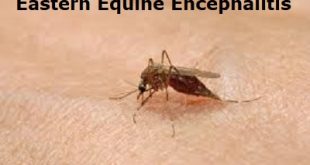Edward’s Syndrome – Definition
Edward’s Syndrome is also known as Trisomy 18 (T18) or Trisomy E. It is a genetic disorder caused by the presence of all or part of an extra 18th chromosome. The majority of people with the syndrome die during the fetal stage; infants who survive experience serious defects and commonly live for short periods of time. Edwards’ syndrome is associated with a broad spectrum of abnormalities which consist of greater than one-hundred and thirty discrete defects involving the brain, heart, craniofacial structures, kidneys and stomach.
Karyotype of Edward’s Syndrome
History of edward’s syndrome
John Hilton Edwards first described the symptoms of the genetic disorder known as edwards syndrome-one of the most common forms of human trisomy, which occurs when cells have an extra copy of a chromosome, in 1960. Trisomy 18, also known as Edwards Syndrome, occurs approximately once per 6000 live births and is second in frequency only to Trisomy 21, or Down’s syndrome, as an autosomal trisomy. Trisomy 18 causes substantial developmental problems in utero.
Types of edward’s syndrome
- Full trisomy 18. The extra chromosome is in every cell in the baby’s body. This is by far the most common type of trisomy 18.
- Partial trisomy 18.The child has only part of an extra chromosome 18. That extra part may be attached to another chromosome in the egg or sperm (called a translocation). This type of trisomy 18 is very rare.
- Mosaic trisomy 18. The extra chromosome 18 is only in some of the baby’s cells. This form of trisomy 18 is also rare.
Epidemiology about edward’s syndrome in worldwide
Trisomy 18 is the second most common autosomal trisomy among live born children after trisomy 21.
Various population studies across the world estimate live birth prevalence of trisomy 18 between 1 in 3,600 to 1 in 10,000 with the best overall estimate as 1 in 6,000 live births. Changes in prenatal screening and maternal age are having an impact on live born prevalence.
In live born infants, it is more likely that the affected infant is female rather than male. This is thought to be due to the fact that male fetuses with trisomy 18 are more likely to be lost due to miscarriage or stillbirth.
Symptoms of edward’s syndrome
Babies with trisomy 18 are often born very small and frail. They typically have many serious health problems and physical defects, including:
- Cleft palate
- Clenched fists with overlapping fingers
- Defects of the lungs, kidneys, and stomach/intestines
- Deformed feet (called “rocker-bottom feet”)
- Feeding problems
- Heart defects, including a hole between the chambers
- Low-set ears
- Neurodevelopmental delays Chest deformity
- Small head (microcephaly)
- Small jaw (micrognathia)
- short sternum
- Weak cry
Symptoms associated with Trisomy 18 syndrome
Diagnosis of edward’s syndrome
In most cases trisomy 18 are diagnosed prenatally.
- Standard pregnancy screening during the first and second trimesters including serum markers (plasma protein, beta-hCG, alpha-fetoprotein, unconjugated estriol, and inhibin A) with ultrasound (nuchal translucency and other anatomic abnormalities) can accurately diagnose more than three quarters of all cases.
- Potential tests include maternal serum alpha-fetal protein analysis or screening, ultrasonography, amniocentesis
- Chorionic villi sampling (CVS) is another genetic-based test that can diagnose trisomy 18.
- Definitive diagnosis is achieved through karyotyping, which involves drawing the baby’s blood for a microscopic examination of the chromosomes. Using special stains and microscopy, individual chromosomes are identified, and the presence of an extra chromosome 18 is revealed.
- In addition, a pregnant woman carrying a child with Edwards’ syndrome may have an unusually large uterus during pregnancy, due to the presence of extra amniotic fluid (polyhydramnios). An unusually small placenta may be noted during the birth of the child.
- After birth, the doctor may suspect trisomy 18 based on the child’s face and body. A blood sample can be taken to look for the chromosome abnormality.
Treatment and medications
- There is no cure for trisomy 18. Treatment for trisomy 18 consists of supportive medical care to provide the child with the best quality of life possible.
- Constipation due to poor abdominal muscle tone is often a life-long problem for babies and children with Edwards’ syndrome, resulting in fretfulness, discomfort, and feeding problems. Anti-gas medication, special milk formulas, stool softener medicines, laxatives, and suppositories are all possible treatments that the doctor may recommend to ease the discomfort of gas in the bowels or constipation.
Trisomy 18 Prognosis and Life Expectancy
- Due to the presence of several life-threatening medical problems, many infants with trisomy 18 die within their first month. Five percent to 10 percent of children with this condition live past their first year.
Prevention of edward’s syndrome
Most cases of Edwards’ syndrome are not hereditary and cannot be prevented. However, parents who have had a child with Edwards’ syndrome are at increased risk of having another child with the syndrome.
Prognosis
- 50% of children born with this disorder do not survive the 1st week of life
- most die before 1 year of age
- some cases have been reported on children surviving into teenage years, though with multiple medical problems
 Diseases Treatments Dictionary This is complete solution to read all diseases treatments Which covers Prevention, Causes, Symptoms, Medical Terms, Drugs, Prescription, Natural Remedies with cures and Treatments. Most of the common diseases were listed in names, split with categories.
Diseases Treatments Dictionary This is complete solution to read all diseases treatments Which covers Prevention, Causes, Symptoms, Medical Terms, Drugs, Prescription, Natural Remedies with cures and Treatments. Most of the common diseases were listed in names, split with categories.







